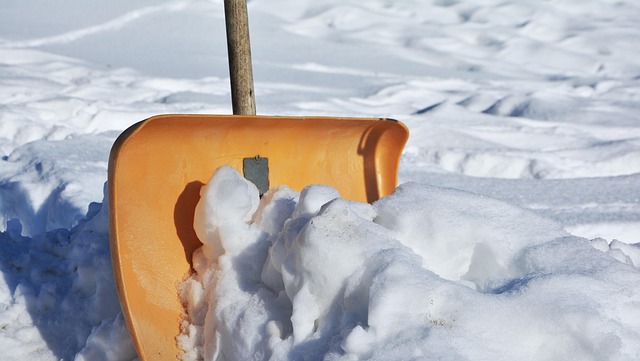“In Anderson, SC, severe storms can leave trees damaged, posing safety risks to property and individuals. Understanding storm damage and proper tree care is crucial. This guide delves into navigating post-storm tree and branch removal, emphasizing safety precautions, assessing tree stability, and utilizing the right techniques. For commercial properties, seasonal pruning offers benefits that enhance landscape aesthetics and safety. Discover expert tips on when and how to schedule pruning for optimal results.”
- Understanding Storm Damage to Trees
- Safety Precautions for Removal
- Assessing Tree Health and Stability
- Proper Tools and Techniques for Pruning
- Commercial Property Considerations
- Seasonal Pruning Benefits and Schedule
Understanding Storm Damage to Trees
Storms can cause significant damage to trees, leading to dangerous situations on both public and private property. Understanding how storms impact trees is crucial for effective maintenance. Strong winds, heavy rain, and lightning strikes can all contribute to tree damage, affecting their structural integrity. Regular assessment of trees after a storm is essential to identify vulnerable branches that may pose risks.
For commercial properties in Anderson, SC, seasonal tree pruning plays a vital role in mitigating storm damage. Professional arborists can inspect trees and remove dead or weak branches before the next severe weather event. This proactive approach not only enhances the overall health of the trees but also reduces potential hazards to people, buildings, and power lines.
Safety Precautions for Removal
When it comes to storm-damaged tree and branch removal, safety should always be the top priority. If a tree has been severely damaged by a storm, there’s an increased risk of branches falling unexpectedly, posing a hazard to people and property. It’s crucial that homeowners or commercial property managers in Anderson, SC consider seasonal tree pruning as a preventive measure. Regular maintenance includes removing dead or weak branches before severe weather events, which can significantly reduce the risk of injury or damage.
For large trees with extensive damage, it’s best to hire certified arborists. They have the specialized equipment and expertise needed for safe removal. When selecting an arborist, make sure they are licensed, insured, and experienced in handling storm-damaged trees. Proper protective gear, including hard hats, safety goggles, and gloves, should be worn by both professionals and individuals assisting to minimize risks during the removal process.
Assessing Tree Health and Stability
After a storm, assessing the health and stability of trees is crucial before attempting any removal or major pruning. In Anderson, SC, where seasonal tree pruning for commercial properties is common, professionals should look for signs of damage like broken branches, split trunks, or significant leaf loss. These indicators could suggest structural weakness, making the tree a potential hazard, especially if it’s close to power lines or buildings.
Regular maintenance through seasonal pruning can help strengthen trees and reduce the risk of further damage during storms. For commercial properties, proper assessment and timely pruning not only enhance safety but also contribute to the overall aesthetics and health of the landscape.
Proper Tools and Techniques for Pruning
When it comes to storm-damaged tree and branch removal, especially in commercial settings like those in Anderson, SC, proper tools and techniques for pruning are essential. Seasonal tree pruning is a critical practice that not only enhances the aesthetics of properties but also ensures the health and safety of both trees and nearby structures. For commercial properties, where large trees may have complex structures, using the right equipment makes the process more efficient and reduces risks.
Professionals in Anderson SC often rely on various tools such as pruning shears, loppers, saws, and chain saws to remove damaged branches. Proper technique involves making clean cuts just outside the branch collar (the swollen area where a branch joins the trunk). This promotes healing and prevents disease entry points. For larger branches, proper techniques include felling methods that ensure minimal damage to the tree and nearby areas, reflecting a careful balance between necessary removal and preservation of the tree’s health.
Commercial Property Considerations
After a storm, damaged trees and branches on commercial properties in Anderson, SC require prompt attention to ensure safety and maintain aesthetics. Commercial property managers should consider seasonal tree pruning as a proactive measure to minimize damage during severe weather events. Regular maintenance includes removing dead or diseased branches, shaping trees for better structural integrity, and reducing the risk of falling debris.
When organizing storm-damaged branch removal, commercial property owners in Anderson should consult with certified arborists who understand local regulations and best practices. Seasonal tree pruning services can help restore the health and beauty of landscapes while ensuring compliance with safety standards. This is particularly important for high-traffic areas where well-maintained trees enhance customer experiences and contribute to overall property value.
Seasonal Pruning Benefits and Schedule
Regular seasonal pruning is an essential practice for maintaining the health and aesthetic appeal of trees on commercial properties in Anderson, SC. This meticulous process involves the strategic removal of dead, diseased, or damaged branches to promote new growth and strengthen the tree’s overall structure. By scheduling pruning during the appropriate seasons, property managers can maximize the benefits for their trees.
The ideal time for seasonal tree pruning typically falls between late winter and early spring when trees are still in dormancy. This period allows for easier branch removal as the tree is less susceptible to shock or damage. Pruning during this season also encourages new growth in the warmer months that follow, fostering a healthier and more vibrant tree. Regular maintenance ensures that branches don’t become a safety hazard due to storm damage, enhancing the overall safety of the property.
